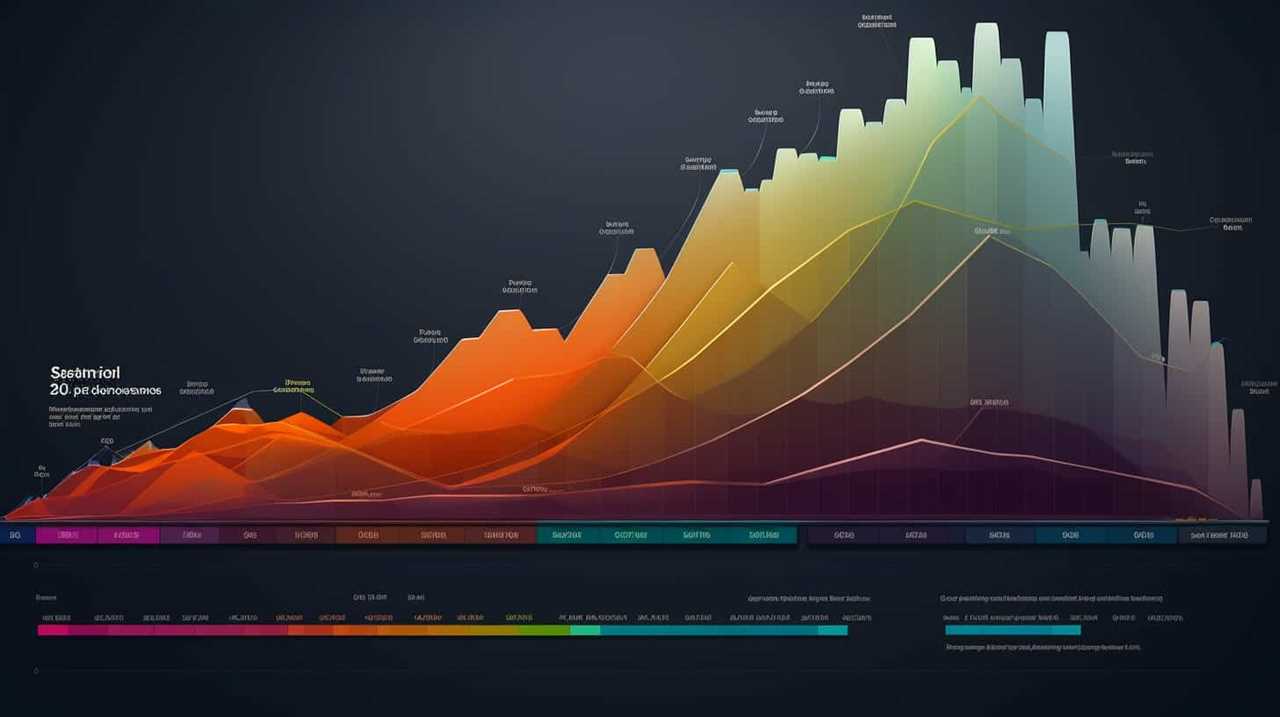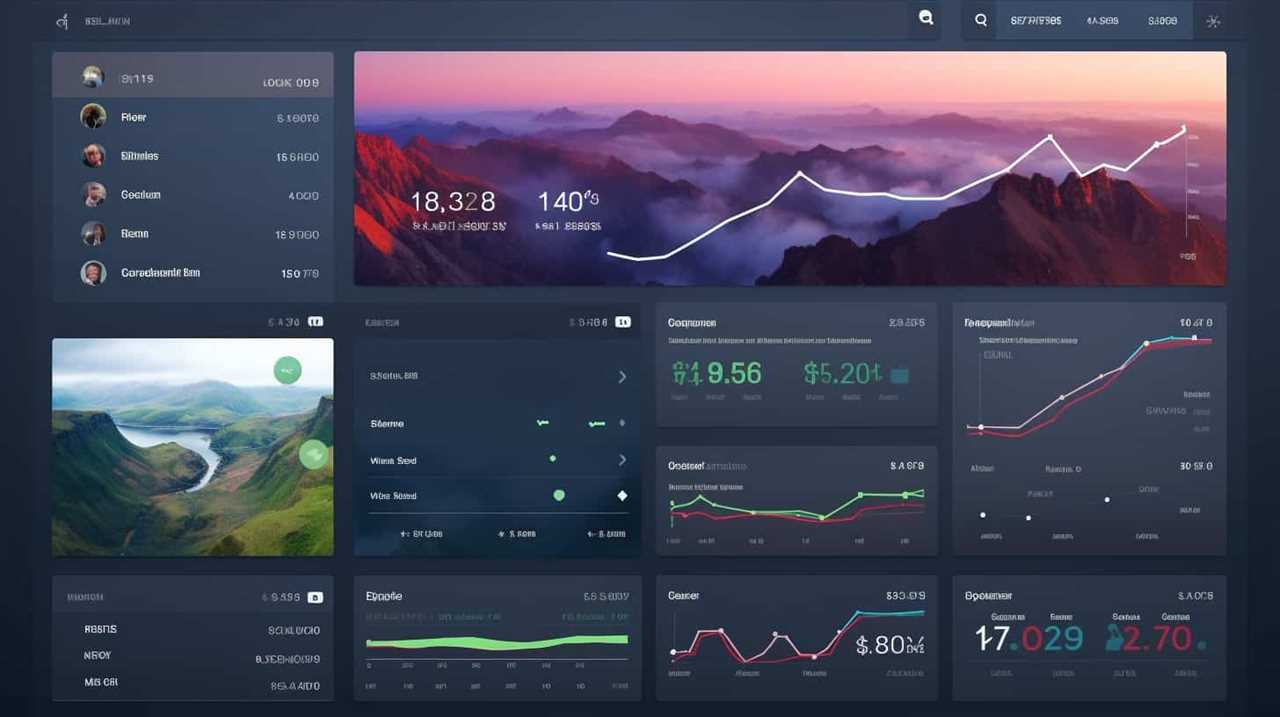Hello, SEO enthusiasts!
Today, we delve into the world of technical SEO specifications, a crucial aspect of website optimization. Like a well-oiled machine, a properly crafted technical SEO specification sets the foundation for improved search engine rankings and increased organic traffic.
In this article, we’ll explore the definition, elements, benefits, and common challenges of implementing a technical SEO specification.
So, let’s tighten those bolts and get ready to master the art of technical SEO!

Key Takeaways
- A technical SEO specification helps optimize website performance and enhance user experience.
- It serves as a guide for website developers and SEO professionals to implement best practices.
- Implementing a technical SEO specification improves the chances of ranking higher in search results.
- It addresses technical issues that may hinder website performance in search results, such as page speed, crawlability, mobile-friendliness, and duplicate content issues.
Importance of Technical SEO Specification
The importance of a technical SEO specification lies in its ability to optimize website performance and enhance user experience. A technical SEO specification serves as a blueprint that guides website developers and SEO professionals in implementing best practices for search engine optimization.
By following these specifications, websites can ensure that they meet the technical requirements set by search engines, which in turn improves their chances of ranking higher in search results. A well-implemented technical SEO specification can help improve website speed, crawlability, mobile-friendliness, and overall site performance.
It plays a crucial role in search rankings by providing search engines with the necessary information to understand and index a website’s content effectively. In essence, a technical SEO specification acts as the foundation for a website’s search engine visibility and success.
Definition of Technical SEO Specification
What exactly does a technical SEO specification entail?

A technical SEO specification is a document that outlines the specific requirements and guidelines for optimizing a website’s technical aspects to improve its search engine visibility and performance. It serves as a roadmap for developers, designers, and SEO professionals to ensure that the website is structured and coded in a way that meets the best practices set by search engines.
The role of technical SEO is to address technical issues that may hinder a website’s performance in search results. This can include optimizing page speed, improving crawlability, implementing structured data markup, and resolving duplicate content issues.
Elements of a Technical SEO Specification
In a technical SEO specification, there are several key points to consider. These include optimizing key SEO factors such as meta tags, keyword usage, and internal linking structure.
Additionally, website performance optimization, such as improving page load speed and mobile responsiveness, plays a crucial role in technical SEO.

Lastly, on-page technical requirements, such as proper URL structure, canonical tags, and XML sitemap implementation, are essential for search engine crawlability and indexing.
Key SEO Factors
Our technical SEO specification includes four key factors that are crucial for optimizing websites for search engines.
The first factor is website architecture, which focuses on creating a clear and logical structure for search engine crawlers to navigate. This includes URL structure, internal linking, and XML sitemaps.
The second factor is on-page optimization, which involves optimizing individual web pages with relevant keywords, meta tags, and content optimization.

The third factor is mobile optimization, ensuring that the website is responsive and mobile-friendly.
Lastly, technical SEO also includes website speed and performance optimization, which involves optimizing page load times, reducing server response time, and compressing images.
These key SEO factors work together to improve the visibility and ranking of a website in search engine results.
Moving forward, let’s delve into the importance of website performance optimization.

Website Performance Optimization
To optimize website performance, we prioritize various elements within our technical SEO specification. When it comes to website speed, we focus on minimizing load times and improving overall user experience.
Some key elements we consider include:
- Code optimization: We ensure that our website’s code is clean, concise, and optimized for fast loading times.
- Image optimization: We compress and resize images to reduce file size without sacrificing quality.
- Caching: We implement caching techniques to store frequently accessed data, reducing server load and improving response times.
- Server configuration: We optimize our server settings, including caching headers, compression, and resource allocation, to maximize website performance.
On-Page Technical Requirements
Continuing from our focus on website performance optimization, let’s delve into the on-page technical requirements that form the elements of a technical SEO specification.
On-page optimization plays a crucial role in improving a website’s visibility and ranking on search engines. To ensure optimal on-page performance, a thorough technical SEO audit is necessary. This audit involves evaluating various elements such as meta tags, headers, URLs, and content structure.

Meta tags must be properly optimized with relevant keywords to enhance search engine crawlers’ understanding of the page’s content. Headers should be organized using appropriate hierarchy and include target keywords. URLs should be concise, descriptive, and include relevant keywords.
Additionally, the content structure should be logical and easy to navigate for both users and search engines. By adhering to these on-page technical requirements, websites can significantly improve their search engine rankings and attract more organic traffic.
Role of Technical SEO Specification in Website Optimization
The role of a technical SEO specification is crucial in optimizing a website for search engines.
By focusing on technical aspects such as website performance optimization, a technical SEO specification ensures that the website is optimized to load quickly, have clean and crawlable code, and provide a seamless user experience.

These optimizations play a significant role in improving search rankings and overall visibility of the website in search engine results.
Importance of Technical SEO
In optimizing a website, the role of a technical SEO specification is vital for ensuring its technical aspects are optimized effectively. A technical SEO specification serves as a guide for implementing technical SEO practices and acts as a checklist to ensure all necessary optimizations are in place.
Its importance lies in the following:
- Identification of technical issues: A technical SEO specification helps identify and address any technical issues that may hinder website performance and visibility.
- Optimization of site structure: It guides the optimization of the website’s structure, including URL structure, navigation, and internal linking, to improve crawlability and user experience.
- Mobile optimization: It ensures that the website is mobile-friendly and optimized for mobile devices, considering factors like responsive design and fast loading times.
- Website speed optimization: A technical SEO specification helps in optimizing website speed by addressing issues like server response time, image compression, and caching.
With a well-defined technical SEO specification, website owners can effectively optimize their websites to achieve better search engine rankings and improved user experience. This lays the foundation for the subsequent section on website performance optimization.

Website Performance Optimization
To optimize website performance, a technical SEO specification plays a crucial role in guiding the implementation of technical SEO practices.
One important aspect of website performance optimization is website speed. With internet users expecting fast-loading websites, optimizing website speed has become essential. A technical SEO specification can provide guidelines on how to optimize the speed of a website by reducing page load times and improving server response times.
Mobile optimization is another key factor in website performance. As more users access websites through mobile devices, it’s important to ensure that the website is optimized for mobile viewing. A technical SEO specification can outline best practices for mobile optimization, such as responsive design and mobile-friendly layouts.
Role in Search Rankings
With regards to search rankings, a technical SEO specification plays a vital role in optimizing website performance. Here are four key ways in which a technical SEO specification influences search rankings:

- Crawlability: A well-structured technical SEO specification ensures that search engine crawlers can easily access and understand your website’s content, leading to better indexation and visibility.
- Site Speed: By implementing technical SEO best practices such as optimizing code and reducing page load times, a technical SEO specification improves site speed, which is a crucial ranking factor.
- Mobile Friendliness: A technical SEO specification ensures that your website is responsive and mobile-friendly, allowing it to rank higher in mobile search results.
- User Experience: A technical SEO specification focuses on improving the overall user experience, including factors such as site architecture, navigation, and usability, which positively impact search rankings.
Understanding the role of a technical SEO specification in search rankings is essential for optimizing your website’s performance. Now, let’s explore the benefits of implementing a technical SEO specification.
Benefits of Implementing a Technical SEO Specification
We have found numerous benefits in implementing a technical SEO specification.
The role of technical SEO is crucial in ensuring that a website is optimized for search engine crawlers and can be easily understood and ranked by search engines.
By having a technical SEO specification in place, businesses can improve their website’s visibility, organic traffic, and overall search engine rankings.

A technical SEO specification helps in identifying and resolving technical issues that may hinder a website’s performance, such as slow page load times, broken links, and duplicate content.
Additionally, it ensures that websites are mobile-friendly and have proper URL structures, meta tags, and XML sitemaps.
Implementing a technical SEO specification not only enhances user experience but also helps businesses stay ahead of their competitors in the ever-evolving digital landscape.
Common Challenges in Creating a Technical SEO Specification
One of the most common challenges encountered when creating a technical SEO specification is identifying the optimal keyword density for each webpage. This is crucial because keyword density plays a significant role in search engine rankings. However, determining the right balance can be tricky, as keyword stuffing can lead to penalties, while insufficient keyword usage may result in poor visibility.

To overcome this challenge, here are some key factors to consider:
- Conduct thorough keyword research to identify relevant and high-performing keywords.
- Analyze competitor websites to gain insights into their keyword strategies.
- Use SEO tools to measure keyword density and ensure it falls within the recommended range.
- Regularly monitor and adjust keyword density based on search engine algorithm updates.
Best Practices for Developing a Technical SEO Specification
To develop a strong technical SEO specification, our team focuses on implementing best practices for SEO audits, utilizing technical SEO tools and resources. These practices are essential for optimizing keyword density and improving webpage visibility and rankings.
When conducting SEO audits, we ensure that all technical aspects of the website are functioning properly, such as crawlability, indexability, and site speed. We use technical SEO tools and resources to identify and fix any issues that may be hindering the website’s performance.
Additionally, we optimize keyword density by conducting thorough keyword research and strategically placing keywords throughout the website’s content.

Conclusion and Next Steps
After completing the technical SEO specification, our team will now move forward with implementing the necessary changes and optimizations to improve the website’s performance and search engine rankings. This conclusion analysis marks the end of the planning phase and signals the beginning of the action phase.
Our next steps will involve executing the following tasks:
- Conducting a comprehensive website audit to identify any existing issues or areas for improvement
- Implementing on-page optimizations, including keyword optimization, meta tag updates, and content improvements
- Enhancing website speed and performance through technical optimizations, such as optimizing images and minifying code
- Building high-quality backlinks through outreach and content promotion to improve the website’s authority and visibility
Frequently Asked Questions
How Can a Technical SEO Specification Improve Website Performance?
Improving website performance can be achieved through the implementation of a technical SEO specification.
By addressing the importance of technical SEO in website optimization, we can optimize various aspects such as site speed, mobile-friendliness, and crawlability.

Strategies for effective implementation include optimizing website structure, improving code efficiency, and implementing XML sitemaps.
A technical SEO specification ensures that your website meets search engine guidelines, leading to increased visibility, higher rankings, and ultimately, improved website performance.
Can a Technical SEO Specification Help in Increasing Organic Search Traffic?
A technical SEO specification can significantly improve website performance by fine-tuning the architecture and optimizing various technical aspects.
When it comes to increasing organic search traffic, a technical SEO specification plays a crucial role. It ensures that your website is easily crawlable and indexable by search engines, thereby enhancing visibility and attracting more organic traffic.

While on-page SEO focuses on content and keywords, technical SEO complements it by optimizing the website’s technical structure, making it equally important for overall search engine optimization.
What Are Some Common Challenges in Implementing a Technical SEO Specification?
Common challenges and implementation hurdles are inherent when it comes to implementing a technical SEO specification.
It’s crucial to address issues such as website speed optimization, mobile responsiveness, and URL structure.
Ensuring proper indexing and crawlability, fixing broken links, and optimizing meta tags are also key aspects.

Additionally, managing redirects and handling duplicate content can pose significant challenges.
How Can a Technical SEO Specification Address Mobile Optimization?
When addressing mobile optimization, a technical SEO specification plays a crucial role. It ensures that the website is optimized for mobile user experience, which is essential in today’s digital landscape.
With Google’s mobile-first indexing, having a mobile-friendly website is imperative for ranking higher in search results.
A technical SEO specification addresses this by providing specific guidelines and recommendations to optimize the website’s mobile performance, such as responsive design, fast loading speeds, and mobile-friendly navigation.

Are There Any Tools or Resources Available to Assist in Creating a Technical SEO Specification?
There are several tools and resources available to assist in creating a technical SEO specification. These tools can help analyze website performance, identify technical issues, and provide recommendations for optimization. Some popular options include Google Search Console, Moz Pro, and SEMrush.
These tools provide valuable insights into website health, keyword rankings, backlink analysis, and more.
Additionally, online forums and communities like Stack Overflow and SEO forums can serve as valuable resources for discussing and exchanging ideas on technical SEO specifications.
Conclusion
In conclusion, implementing a technical SEO specification is crucial for optimizing a website’s performance.

By defining and addressing specific elements such as site structure, meta tags, and page speed, businesses can improve their search engine rankings and enhance user experience.
However, navigating the challenges of creating a comprehensive technical SEO specification requires careful planning and attention to detail.
By following best practices and continuously refining the specification, businesses can stay ahead in the ever-evolving landscape of search engine optimization.
Stay tuned for our next article on advanced techniques for technical SEO.










